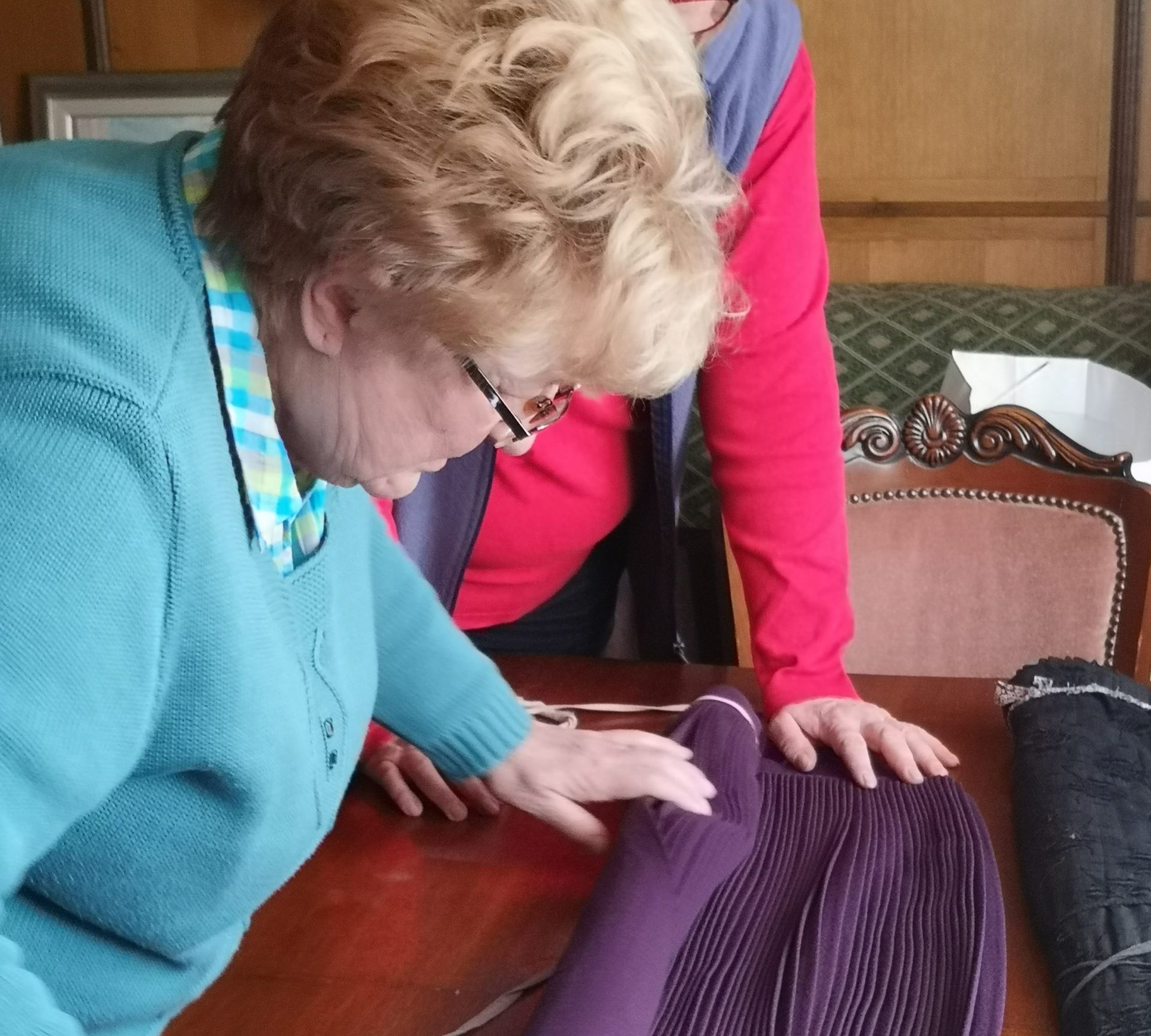Finding out more about a vanishing culture preserved in the memory of our elders – and connecting with our heritage.
Tradition is one of the essential features of culture and includes the transmission of knowledge, customs and procedures from generation to generation. Today, a vanishing culture is preserved in the memory of the older generations. For this reason, it is very important to talk to locals who nurture love for their homeland and culture in order for it to be preserved for the future.
To learn more about the traditional clothes of the village of Virje in Croatia, I went to visit a couple of retired hairdressers, Marija Plemenčić and Marija Šklebar, who shared their memories and also showed me their rich collection of clothing worn traditionally in Virje.
Women’s underwear consisted of petticoats and undershirts sewn from homemade linen, often adorned along the hem with handmade or machine-made cotton lace. The petticoat was richly pleated at the waist, and often had a hidden pocket that was used for field work and, during the war, for defence.
The skirts worn in Virje were very wide, with many tiny pleats. They were pleated by the more skilled seamstresses with the help of hand tools and took a lot of patience. In order for the pleated skirts to retain their shape, the skirts were carefully matched and placed under the mattress on which they slept.
The blouses were cut very wide and decorated with a little lace or tiny buttons. A black silk apron was worn over the skirt, and one made of linen was used for every day. Married women covered their heads with scarves of various colours, matching the colour of their skirts, which was the most different aspect of the clothing compared to that of the women in the city. Combing and covering the hair with a scarf was a long process that took several hours to make everything look perfect.
The ceremonial costume took three years to sew: from sowing their own hemp or flax seeds, then spinning the thread, weaving the cloth, crocheting, sewing, folding and making buttons. With so much effort and love invested in one formal dress, it was worn with pride because it was a reflection of the skill or status of the person wearing it.
During the last decades of the last century, younger women gradually stopped wearing traditional costumes, keeping them only for special occasions such as church feasts, weddings or for the needs of cultural society. But even though they no longer dress that way, they have retained a sense of obligation to preserve these clothing items and knowledge about them, as an expression of respect for past generations and one way of preserving their own cultural heritage.
By getting to know the love for the local heritage of a certain area, we can connect with it and its inhabitants.
Elizabeta Milanović Glavica is a university specialist in tourism and hospitality management. She works for the Central Podravina Tourist Board (tzp-sredisnja-podravina.hr). She is a member of Interpret Croatia and is an IE Certified Interpretive Guide (CIG). She can be contacted at: info@tzp-sredisnja-podravina.hr.
To cite this article: Milanović Glavica, Elizabeta (2021) ‘Traditional costume as a family treasure’. In Interpret Europe Newsletter 1-2021, 26.
Available online: https://interpret-europe.net/wp-content/uploads/2021/03/Newsletter-Spring-2021.pdf


